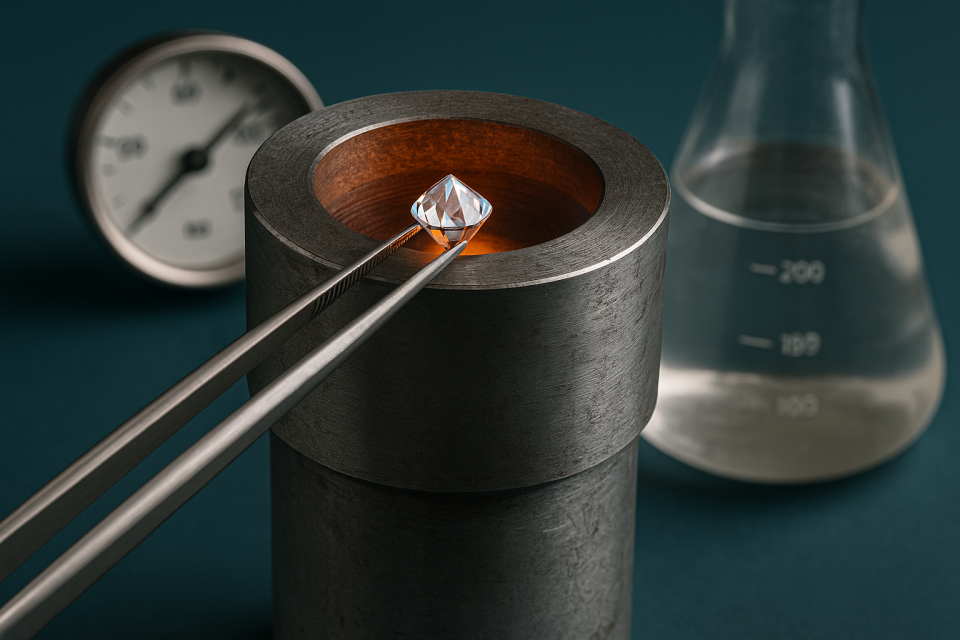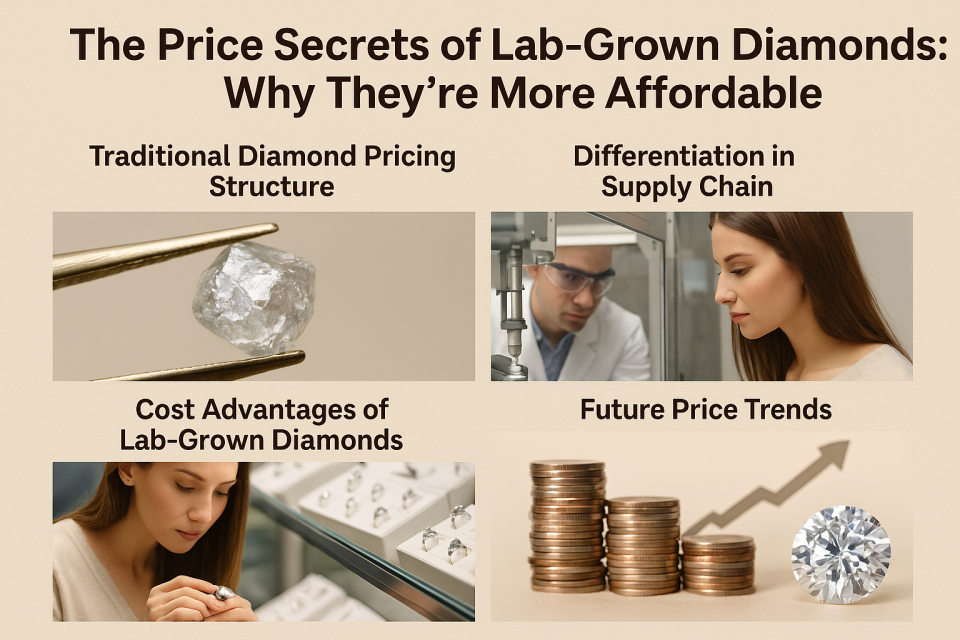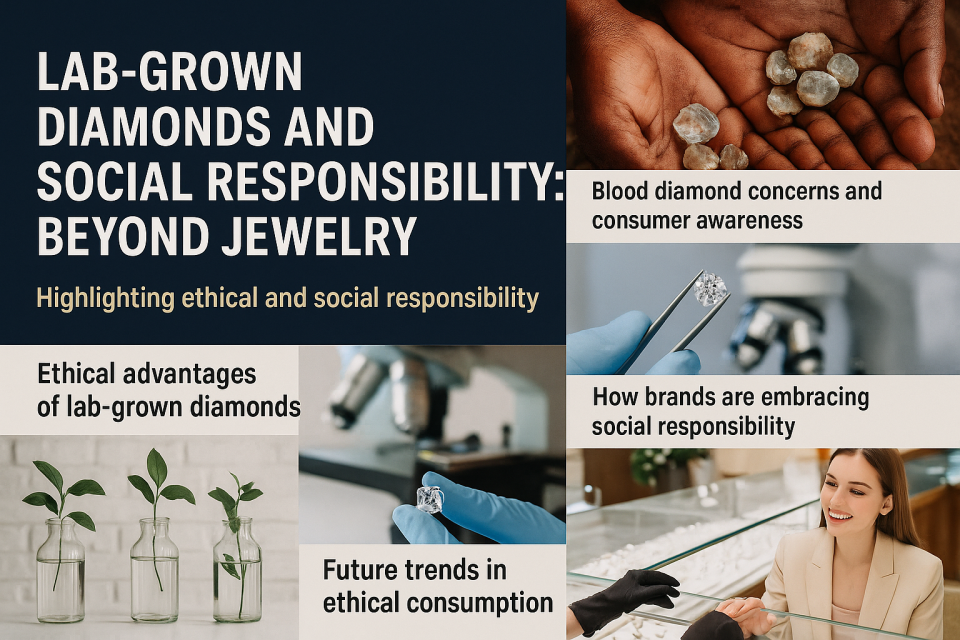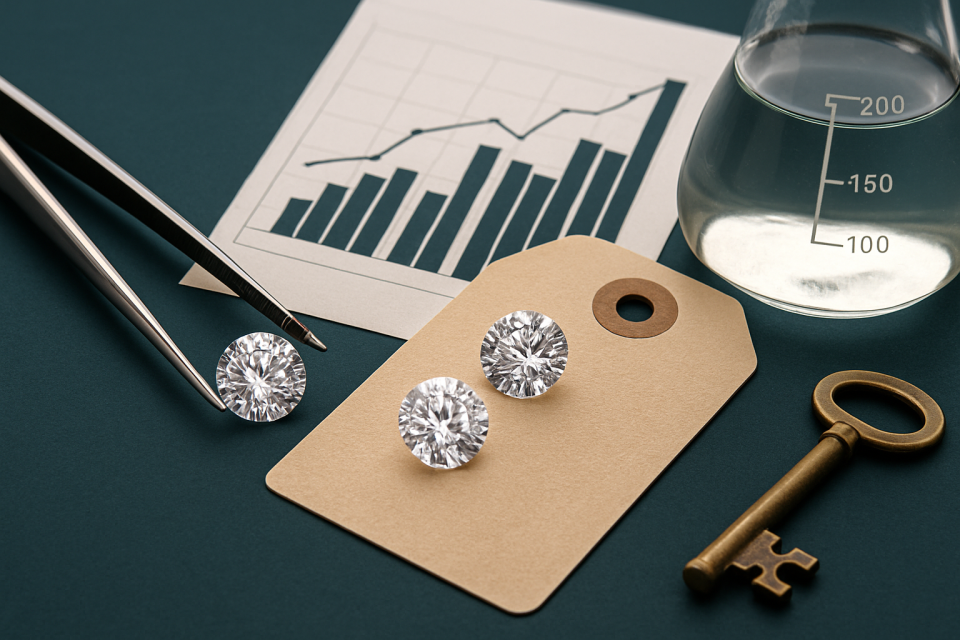Diamonds have long been a symbol of love and luxury, but their high price often makes them feel out of reach for many consumers. Thanks to technological innovation and changes in the jewelry market, lab-grown diamonds are reshaping the industry by offering stunning quality at a fraction of the price. But why are they so much more affordable? Let’s break down the price structure and uncover the secrets behind lab-grown diamonds.
Traditional Diamond Pricing Structure
Mined diamonds require extensive exploration, labor-intensive mining operations, and significant environmental remediation efforts. These processes add substantial costs before the stone even reaches the market. The traditional diamond industry is built on multiple intermediaries—from miners to wholesalers, cutters, and retailers—each adding their own margin, inflating the final price for consumers. On top of this, natural diamonds have long been marketed as rare and exclusive, artificially increasing perceived value and justifying higher pricing.

The Cost Advantage of Lab-Grown Diamonds
Lab-grown diamonds are created using advanced methods like Chemical Vapor Deposition (CVD) or High-Pressure High-Temperature (HPHT). These processes require controlled conditions but eliminate the need for costly mining operations. Once production equipment is established, lab-grown diamonds can be produced more consistently and efficiently, driving down per-carat costs compared to mined diamonds. Additionally, unlike mined diamonds, lab-grown stones are not constrained by geological availability, resulting in a more balanced pricing structure based on supply and demand rather than perceived rarity.

Supply Chain Differences
Many lab-grown diamond companies adopt direct-to-consumer sales models, bypassing multiple intermediaries. This streamlined approach reduces markups, and because lab-grown diamonds are not bound to specific geographic regions, they avoid political instability and logistical challenges, resulting in a more stable and transparent supply chain.
How Consumers Can Maximize Their Budget

Because lab-grown diamonds cost 30–40% less than natural diamonds, consumers can often upgrade to a larger carat size, higher clarity, or better color without increasing their budget. The savings can also be allocated to unique designs, personalized settings, or matching jewelry sets, offering better value for the same spend. Beyond price, choosing lab-grown diamonds also means supporting sustainability and avoiding conflict-related concerns associated with some mined diamonds.
Future Price Trends
As technology advances, the cost of producing lab-grown diamonds is expected to decrease further, widening the price gap with mined diamonds. Growing acceptance by major jewelry brands and consumers is likely to drive increased competition, stabilizing or even lowering retail prices over time. While resale markets are still developing for lab-grown diamonds, the growing consumer preference for ethical and affordable luxury suggests strong long-term demand.
Lab-grown diamonds are not just a technological innovation—they are a market disruptor, bringing affordability, ethical sourcing, and beautiful quality within reach of more consumers. By understanding why they cost less, buyers can make smarter decisions, stretch their budgets further, and embrace a sustainable future for fine jewelry.

